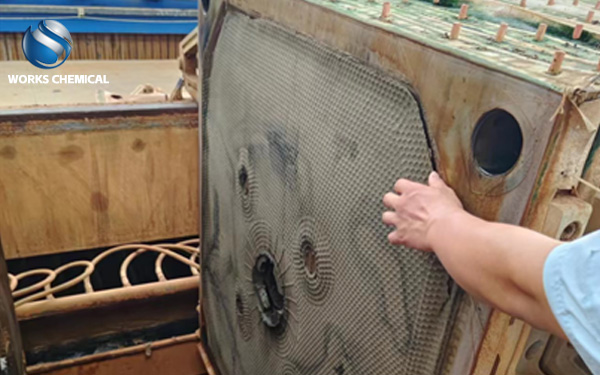
Municipal sludge has a "runny" problem, that is, the central part of the mud cake formed after sludge filtration has a higher water content and a lower density, which is similar to "runny". This problem can be caused by a variety of factors, including sludge impurities, equipment clogging, inadequate pretreatment, improper equipment commissioning, improper operation, and uneven cake density. To solve this problem, the use of sludge enhancer is an effective solution.

Role of sludge synergists
Sludge enhancers usually contain a variety of complex ingredients, such as inorganic compounds, sludge surface structure modifier, degreaser, wall breaking agent, sludge surface treatment agent, sludge stripping agent, etc. These components work together to change the surface structure and properties of the sludge to achieve a better dewatering effect. The sludge enhancer mainly acts on the microscopic level of the sludge, and makes the sludge more easily dehydrated by changing the surface structure of the sludge, reducing the surface load and specific surface area, and destroying the bacterial structure.
The use of sludge synergists
Select the right sludge synergist:
According to the nature of sludge and treatment needs, choose the appropriate sludge synergist.
Ensure the compatibility of sludge enhancer and sludge to avoid adverse reactions.
Correct dosing method:
According to the instructions for the use of sludge enhancer, determine the appropriate dosage and dosing method.
A dosing pump doser or DCS automatic dosing system can be used to ensure precise control of dosing amounts.
Sludge pretreatment:
Before adding the sludge enhancer, the sludge should be adequately pretreated, such as adjusting the pH value and removing impurities.
Pretreatment can improve the homogeneity of sludge and help sludge synergists play a better role.
Equipment debugging and operation:
Ensure the normal operation and commissioning of the filter press equipment.
Use the filter press in strict accordance with the operating procedures to ensure that the compression force is sufficient.
Precautions
Selection of sludge synergist:
The composition and performance of different brands of sludge synergists may be different, and it is necessary to choose according to the actual situation.
Avoid using inferior or expired sludge synergists, so as not to affect the treatment effect.
Dosage control:
Excessive sludge enhancers may lead to increased treatment costs and even have adverse effects on sludge treatment.
Too little sludge enhancer may not achieve the desired treatment effect.
Equipment maintenance and maintenance:
Regular maintenance and maintenance of the filter press equipment to ensure its normal operation.
Clean the blocked filter cloth and filter plate in time to avoid affecting the dehydration effect.
Safety and Environmental Protection:
When using sludge enhancers, it is necessary to comply with the relevant safety operating procedures and environmental regulations.
To avoid harm to the environment and personnel caused by sludge synergists.
In summary, the use of sludge enhancer is an effective way to solve the "runny" problem of municipal sludge. The dewatering efficiency and quality of sludge can be significantly improved by selecting suitable sludge enhancer, correct dosing method, adequate sludge pretreatment and equipment commissioning and operation.